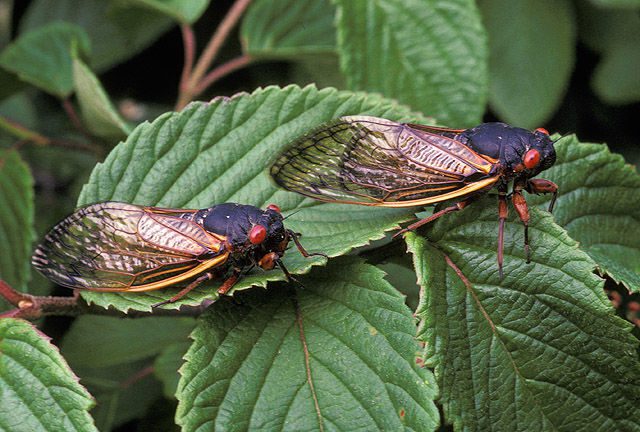I cannot say that insects are my favorite animals. They are scary, crawl, can bite, sting, spread disease, and some can sneak up on you and start feasting on your blood without your even knowing it. However, there is something incredibly interesting about these small creatures. Some are even quite beautiful.
Furthermore, some insects are just pretty strange. For example, take cicadas, which spend more time underground than above ground. Females lay their eggs inside the branches of trees. When the cicada nymphs hatch, they drop to the ground. There, they dig deep into the soil — sometimes as much as eight feet. They stay safe underground as they go through different growth stages, feeding off the sugar stored in tree roots. With periodical cicadas, some species stay below for 13 years and some for 17 years.
Finally, the adult cicadas dig their way out of the earth and climb up onto the trunk of a tree or the side of a building. Then they shed their exoskeleton before flying off to mate and lay eggs. The exoskeleton stays behind, stuck right onto the tree or building. The strange thing is that the old, dry skin looks just like a real cicada, as if the creature were still inside it.
This process fascinates me, so I was excited to learn that the 17-year and the 13-year cicadas are both due to emerge this year. I’ve heard choirs of cicadas singing their raspy mating calls in the woods along French Creek; how much livelier would it be with this convergence! Do not get me wrong; I know that cicadas can cause damage, particularly to young trees, but still. I read that while the 13- and 17- year broods overlap every five years, the concurrence of broods XIII and XIX has not happened since 1803.
Why all the excitement? Information at the PennState Extension website says, “While some overlap of broods occurs, especially along margins where two broods meet, different broods are largely geographically isolated and connect like puzzle pieces across eastern North America.” (There is a color-coded map on the website that illustrates the geographic area of each brood at https://tinyurl.com/2xmeh9mf.) a color-coded map on the website that illustrates the geographic area of each brood at https://tinyurl.com/2xmeh9mf.)
According to an article on the University of Connecticut website, “13-year Brood XIX and 17-year Brood XIII do not overlap to any significant extent. They may co-occur in small patches of woods. Also, the two broods will not even come close to each other in southeastern Pennsylvania.” (https://cicadas.uconn.edu/) There is only a small area of Illinois where the 13- and 17-year broods overlap.
I was confused, though: With such a long life cycle, why do we hear cicadas every year in southeastern Pennsylvania? It turns out that while PA is home to three species of 17-year cicadas that may emerge at the same time, PA is also home to annual cicadas that emerge each year.
One amusing bit of information I discovered in my searching: the sound of bagpipes has been observed at least once to be effective against cicadas. (This was at an outdoor wedding.) What was not mentioned was whether the sound of the bagpipes repelled the cicadas or simply drowned out the cicadas’ raspy noise. (cicadamania.com)
Pam Baxter loves to grow organic vegetables and resides in Kimberton. You can contact her at [email protected] or send mail to P.O. Box 80, Kimberton, PA 19442.









